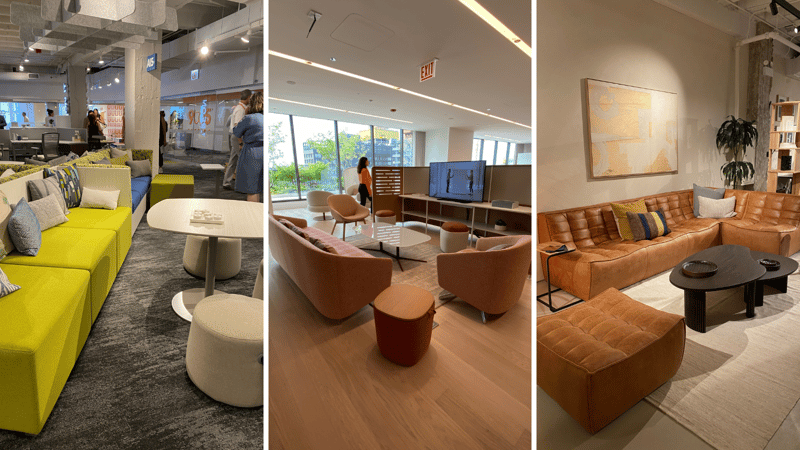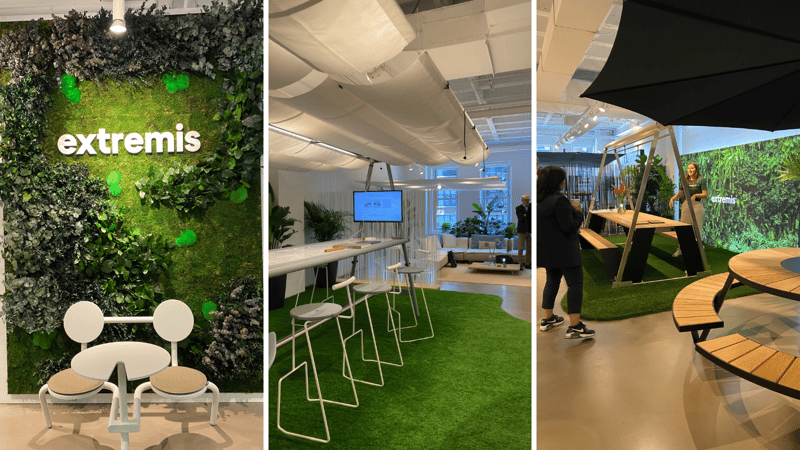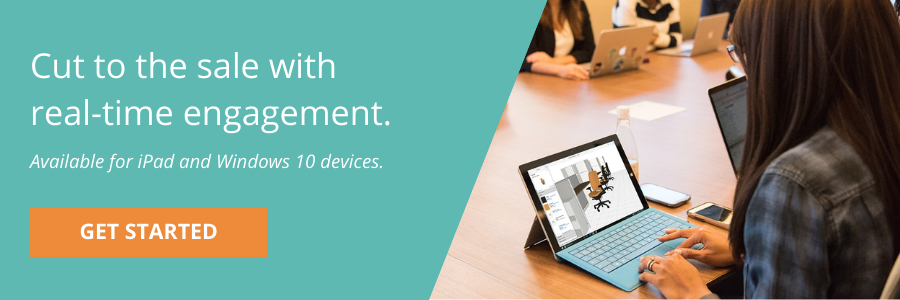We’ve reached the end of 2022! And what a year it was. This was a big year for the contract furniture and design industry as we saw many workers move back to working in offices and we entered the era of the hybrid worker. To help entice workers back into the office, designers had to get creative with workplace designs to create welcoming and multi-functional environments that would get people excited about coming back in.
This year we saw several new trends pop up across the furniture that is the direct result of this new hybrid work era. As 2022 comes to an end we will look back at the year and summarize some of the top office furniture design trends that we saw from our manufacturer clients across verticals. This way when we head into 2023 you have the best idea of what offices are looking for when it comes to designs and layouts. With The KITS Collaborator, you can easily apply these trends to your own clients and layouts.
Bringing “Home” into the Workplace
One of the biggest office furniture trends we saw this year was the idea of bringing some sense of “home” into the workplace. Over the past two years, a majority of office workers had a stint of remote work. Many people grew to like some of the creature comforts of home.

In order to entice people out of their home environments, office designers are some of these home styles and functions into their offices. This means more offices decided to incorporate furniture like larger couches, informal sitting areas, and varied furniture. This is a trend we saw in multiple settings, and it has even received its own name - “resimercial”. While at one-time formality signaled prestige for the office worker (think post-war office design and groups of workers in offices wearing suits) the trend to softer items like curtains, rugs, mirrors, and framed artwork now signal that the office is familiar and inviting. The trend started in the 2010s to attract talent to comfortable, welcoming spaces and post-pandemic life if making these spaces make more sense. But it’s about more than aesthetics. Traditional office furniture is heavy and hard to move - but consider that at home most people are used to dragging chairs around to suit their needs and the people they have to chat with. Resimercial furniture is more flexible for collaboration and different styles of meetings, and creating a unique space to meet comfortably with co-workers can be an attraction in the office that remote work can’t match. Designers should be careful though not to take the trend too far and blur the reality of work vs home spaces. While an office can have elements of a tasteful living room it probably shouldn't look exactly like one.
Pods for Privacy
As we said, hybrid workplaces were commonplace this year. With workers in and out of the office and there still being a heavy reliance on remote technologies to ensure everyone can still work together, offices had to come up with a way to ensure that there are spaces for in-office workers to connect with their remote teammates.
One piece of furniture that became a little more commonplace over the past year is privacy pods set up for someone to easily connect with remote team members. These pods could be more permanent pieces, built into the office design, but there are portable versions that can be moved around an office. Employees may also appreciate a space to hold a private conversation with HR or accounting and to take a call on their lunch break about personal matters like medical issues and more. We’ve also seen lots of different construction methods. Some are more open, but others are sealed off entirely with a door. Often though they are constructed with glass, still allowing things to feel a little more open. Regardless of how the pod fits into your office design, it can serve key functions. Our friends at Nook Pods point out that wellness can be worked into most spaces with flexible design, but it’s not only for the comfort of workers. Pods can meet the needs of neuro-diverse workers by creating a quiet space away from bright lighting or hallway noise and providing a place for focused work. Pods can also increase the volume of meetings that can happen simultaneously in the same space.
Flexibility for More Workers
Another office furniture design trend that formed this year was offices setting spaces up for workers who may not always be in the office. They created flexible workspaces that could be workers who are in for just a few days a week or even just a few hours. This concept has been dubbed “hoteling”.
Some offices, such as one of the major LinkedIn offices, have set up specific spaces depending on how long workers will be staying in the office. They used furniture setups that are dedicated to specific time frame used from minutes to hours. Hotelling allows for better use of spaces - designers can include fewer desk spaces and create collaborative areas in place of them. Meeting in the office with purpose vs. just sitting there vs. at home is important why the office can meet functional worker needs and removing desks creates greater flexibility. To make workers comfortable, providing a locker or rolling side cabinet can be important for those who might miss leaving personal items at the office. Offices adopting this system are encouraged to invest in a reliable booking system so workers know where they’ll be when they arrive.
Nature in the office
A design trend that also is looking to instill some “home” into the workplace is the inclusion of nature and greenery in more workspaces. Pieces such as planters between desks and live walls have become very popular as a way to bring life to workplaces.

In the same vein, sustainability has also been a major focus this year. More people are looking to make sustainable choices in their offices and more and more manufacturers are offering options to help them make those choices. This can also include the way that furniture is manufactured, and trying to minimize expensive and wasteful mockup versions with tools like VR and AR that allow users to see what can be created without building and shipping as many samples.
Meeting Spaces with Inclusive Tech
Meetings that take place in person can be hard when one or two people are still working remotely. Camera angles, proper sound, and information sharing all have to be considered. This is another factor that needs to be overcome in the hybrid office. Some offices are now looking at how they can set up meeting spaces that consider the remote worker. Considerations include dedicated cameras and microphones and extra cameras to capture information from whiteboards and presentations. When extra steps are considered, it will make the hybrid work process go all that much smoother.
What’s to Come in 2023?
That wraps up some of the top office furniture design trends from 2022. Hybrid work had a major influence this year and many trends were affected by this change. In 2023 we can expect to see new trends as the year develops and The KITS collaborator will be here to help you and your clients follow along with them.



